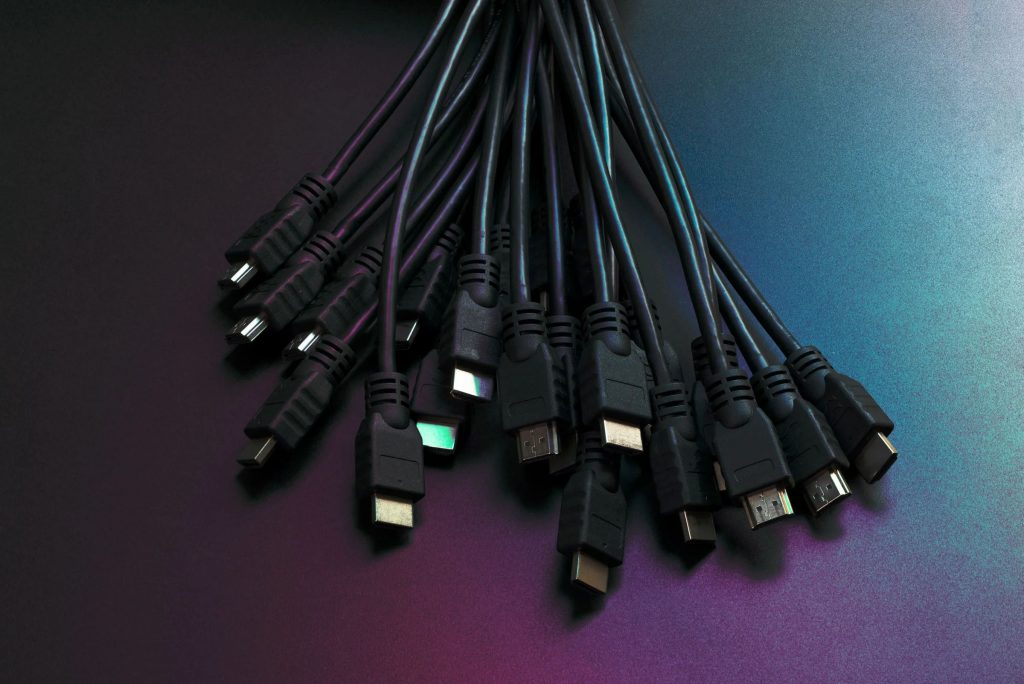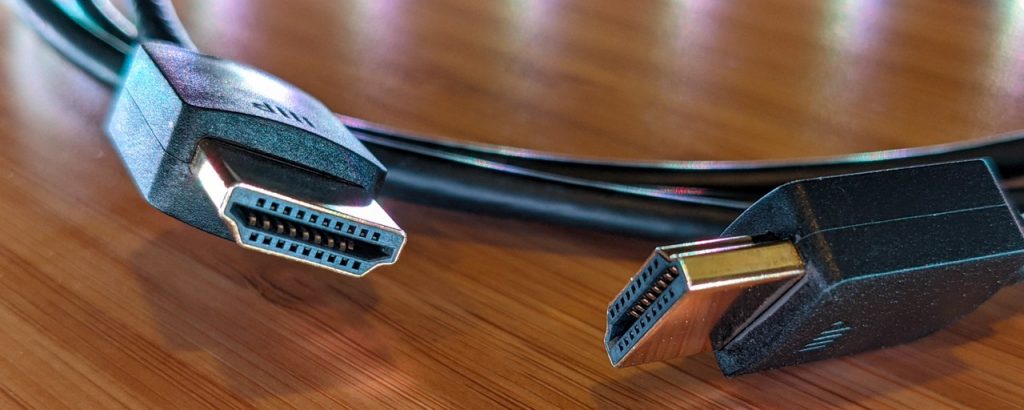HDMI cables transmit high-definition audio and video over a single connection, allowing you to utilize your new HD TV or projector fully. All HDMI cables are essentially the same: they connect your HD TV regardless of manufacturer, audio/video devices such as Xbox, Apple TV, PlayStation, or other media player versions. They essentially allow a data signal to be transmitted from your media device to your television.
HDMI connections have become the industry standard for digitally exchanging audio and video. While there is no doubting their high prevalence, there is much uncertainty about how they work and how they are classified.
Users must first grasp the distinctions between cables to buy the best HDMI cable without spending an arm and a leg. So, if you bought yourself a new 4K TV, you certainly will need a new HDMI cable. In this article, I’ll answer your most common question, what kind of HDMI do I need for 4K?

What Kind of HDMI Do I Need for 4K?
Any high-speed cable will most likely meet the 2.0 a and b specifications. In other words, regardless of which version of the certification criteria existed when a cable was certified, all high-speed cables should behave similarly.
Although all high-speed HDMI connections should transmit 4K at 60 frames per second with HDR, does not imply that they all do. Cables degrade over time, so the older a cable is, the more probable it has developed a fault that impairs 4K HDR performance. Cheaply constructed cables are more prone to wear out faster.
Furthermore, not all cables are constructed to the same high standards. Some cables barely pass the certification version when they were certified, while others outperform it. A cable that barely passed certification in 2010 when high-speed cables were tested at version 1.4 may not be capable of delivering 4K resolutions at 60 frames per second.
Does Every HDMI Cable Support 4K?
Almost all HDMI cables made today should, at the very least, support HDMI 1.4. This is the most recent version to support 4K resolution. HDMI 2.0 is supported by most cables and TV models released in recent years. Regarding cables, the most crucial factor to consider is the speed rating.
Types of HDMI cables
Following the removal of version numbering for HDMI cables a few years ago, HDMI cables are now categorized as Standard, High Speed, or Ultra High Speed. The maximum transfer rate, or bandwidth, of these types, varies.
- 4.95 Gbps for a standard HDMI cable
- 10.2 Gbps high-speed HDMI cable
- 48 Gbps ultra high-speed HDMI cable
As can be seen, faster wires deliver better performance. The majority of cables available in retailers today are High Speed. If you come across an old cable hanging around for a few years, it is likely a Standard cable. This will not support 4K resolution.
How to Recognize High-Speed HDMI Cable
To make sure your HDMI cable is compatible with 4K resolution, search for the HDMI High-Speed mark on the cable’s packaging. Some cables may bear the High-Speed designation. This, however, is not particularly prevalent. If you want to be certain that you have the correct cable, you should purchase a new one.
Since nearly all HDMI cables provide the same display quality, you shouldn’t be too concerned about selecting a new cable. Everything is fine as long as it bears the High-Speed mark and is reasonably priced!
Read more: How to Connect a Laptop to a Projector With HDMI

Why Are Some HDMI Cables Labeled as 4K?
You may wonder why manufacturers label cables as 4K at this point. To be honest, it’s all simply marketing cheap tricks. There is no noticeable difference between a 4K cable and one that is not. The speed rating, on the other hand, is an important label. The maximum bandwidth available by the cable will be determined by its speed. Manufacturers frequently classify cables into one of four categories:
- Standard
- High Speed
- Premium
- Ultra-high-speed
Standard
A standard cable would be one that can handle roughly 4.9 Gbps. That would be plenty to handle a 1080p connection without difficulty.
High-speed
Then there’s high speed. At 10.9 Gbps, high-speed cables can quadruple the bandwidth.
Premium and ultra-high speed
Then there are premium and ultra-high-speed options. As you might expect, these cables allow considerably faster transmission speeds of 18 Gbps and 48 Gbps, respectively.
It’s worth noting that finding a standard cable in a store or online is difficult. You should avoid these only wires because they cannot support 4K. However, there isn’t much risk in purchasing a standard cable by mistake in this scenario.
When to Reuse an HDMI Cable You Own
Your existing HDMI cable may provide all of the functions you require. Here’s how you can find out.
Simply connect your TV and media device using the existing cable. You’re good to go if you obtain a stable image with no artifacts. There is no need for extra thought.
There are two techniques to determine whether your existing cable is adequate.
Check the cable speed
Examine the cable to see if it is branded as High Speed, Premium High Speed, or Ultra High Speed. In case the supplier and part numbers are printed on the cable, you may be able to check it if it does not clearly state what type it is.
Connect the cable
Connect the cable to your TV and your media device, and then adjust both settings to meet your needs. You should be fine if you get a consistent image while watching the material.
The second option is slightly more reliable; you’ll often get a signal immediately. However, it is normally advisable to approach one and move on to way two. If step two results in a blank screen, returning to viewable settings may be difficult, depending on your device.
Also read: What Are VGA Cables Used For?
Conclusion
Since I’ve answered your question on what kind of HDMI do I need for 4K, you should also know that there are a few things regarding HDMI that you need to be aware of, even though a cable manufacturer using the term “4K” on the label does not represent anything. Although standards are subject to change, most current cables can support 4K video.
There are a few notable exceptions, but in general, any cable that you purchase from the store will be capable of supporting a 4K video. It is possible that it does not handle 4K video at a higher framerate; at this time, you may need to track down an HDMI cable with an extremely high data transfer rate for this.